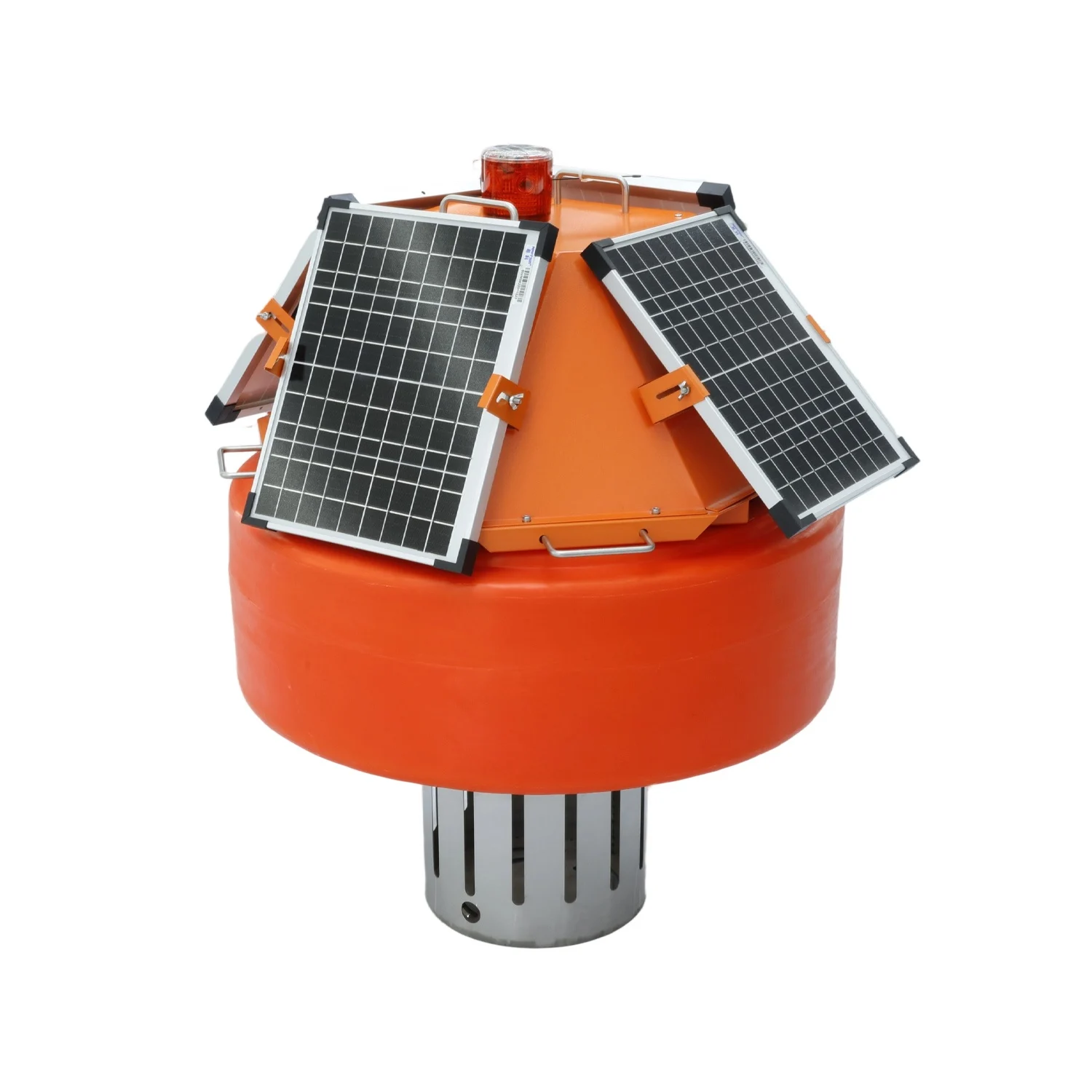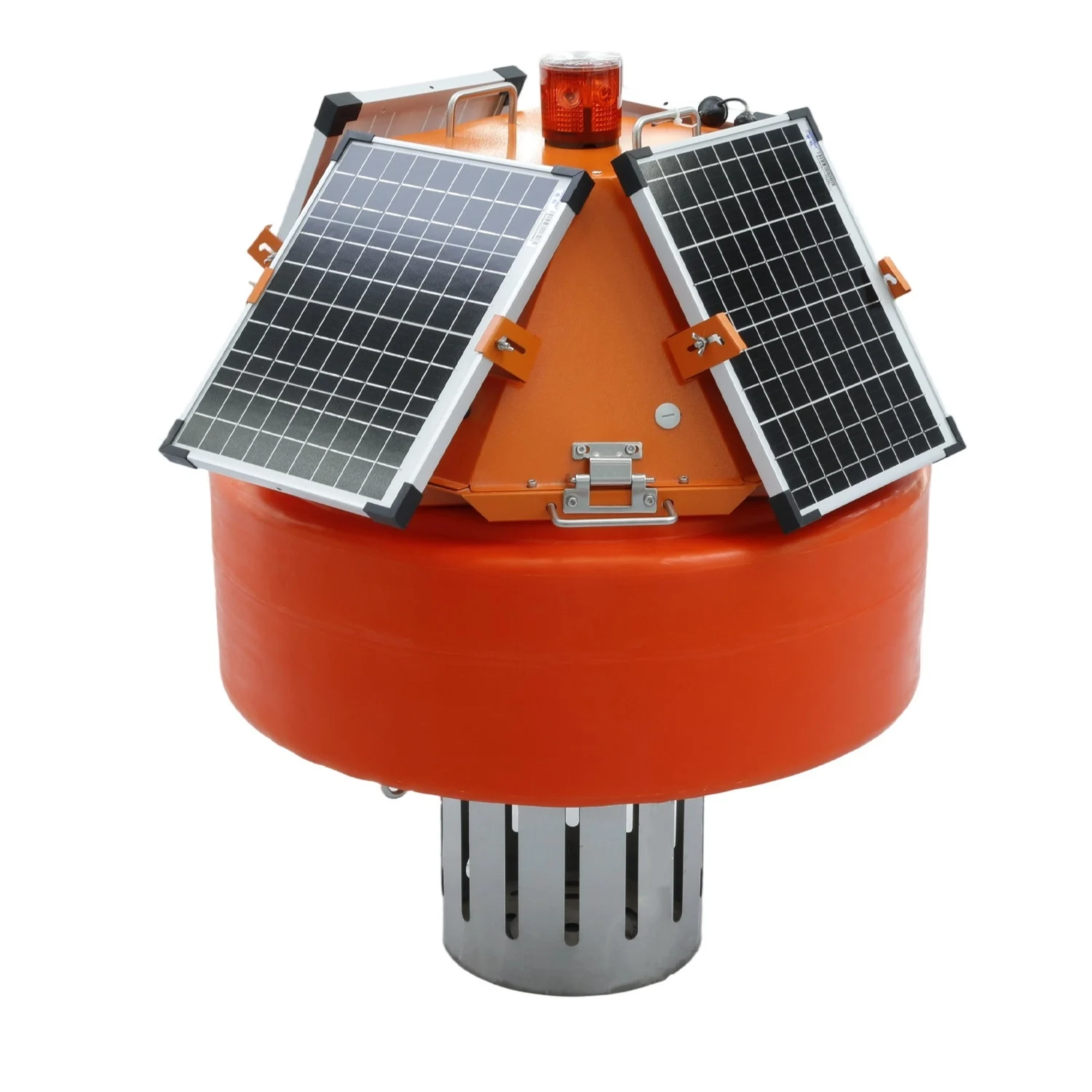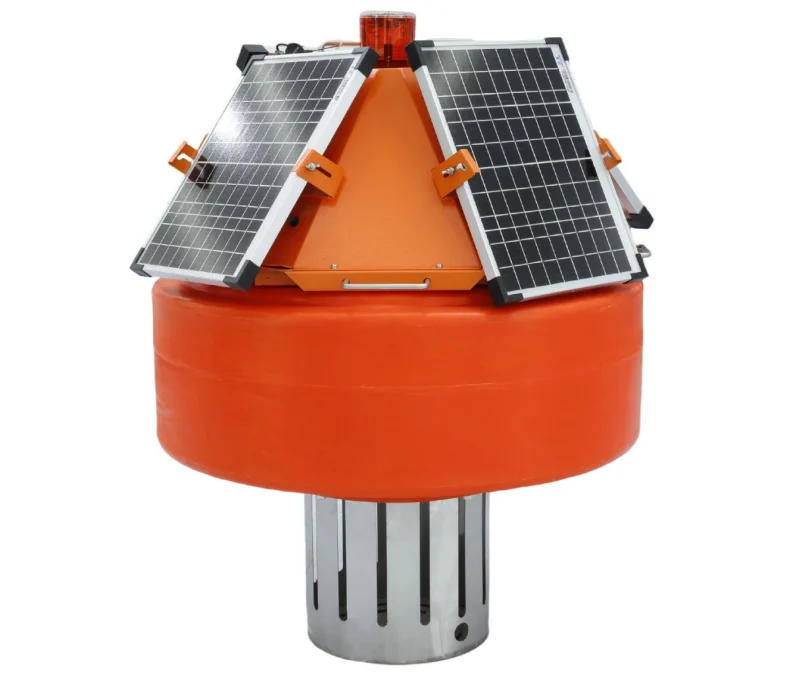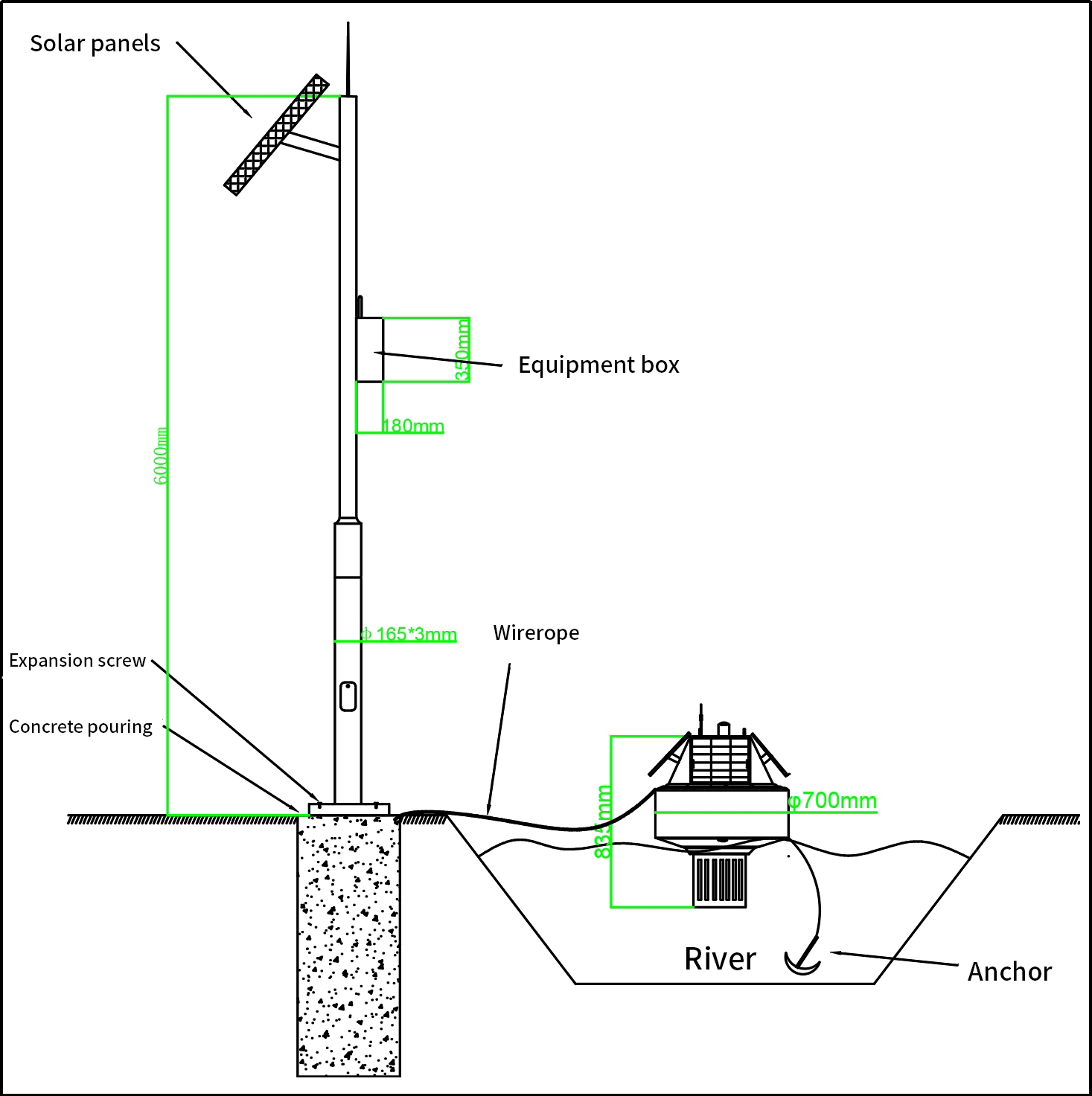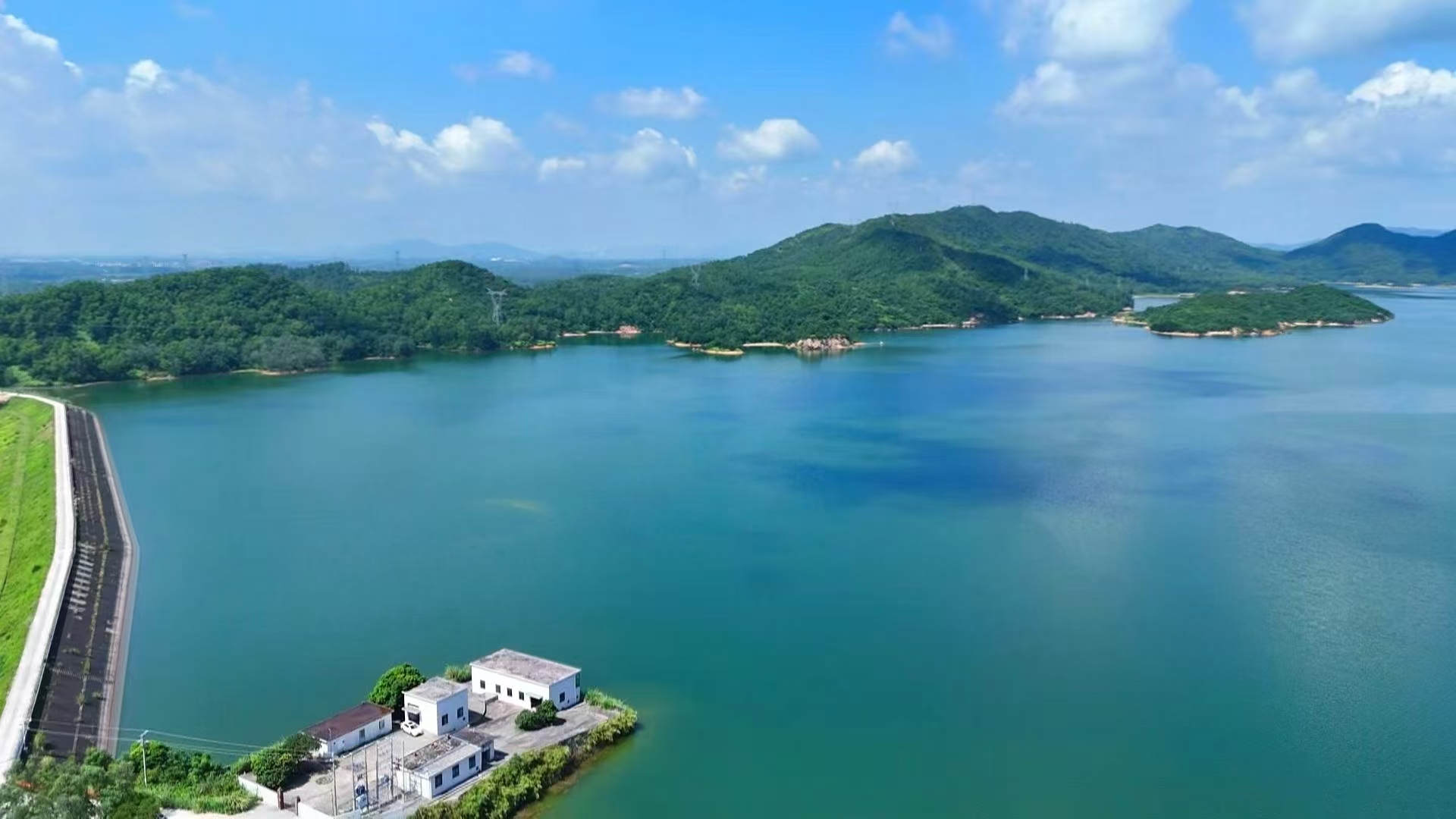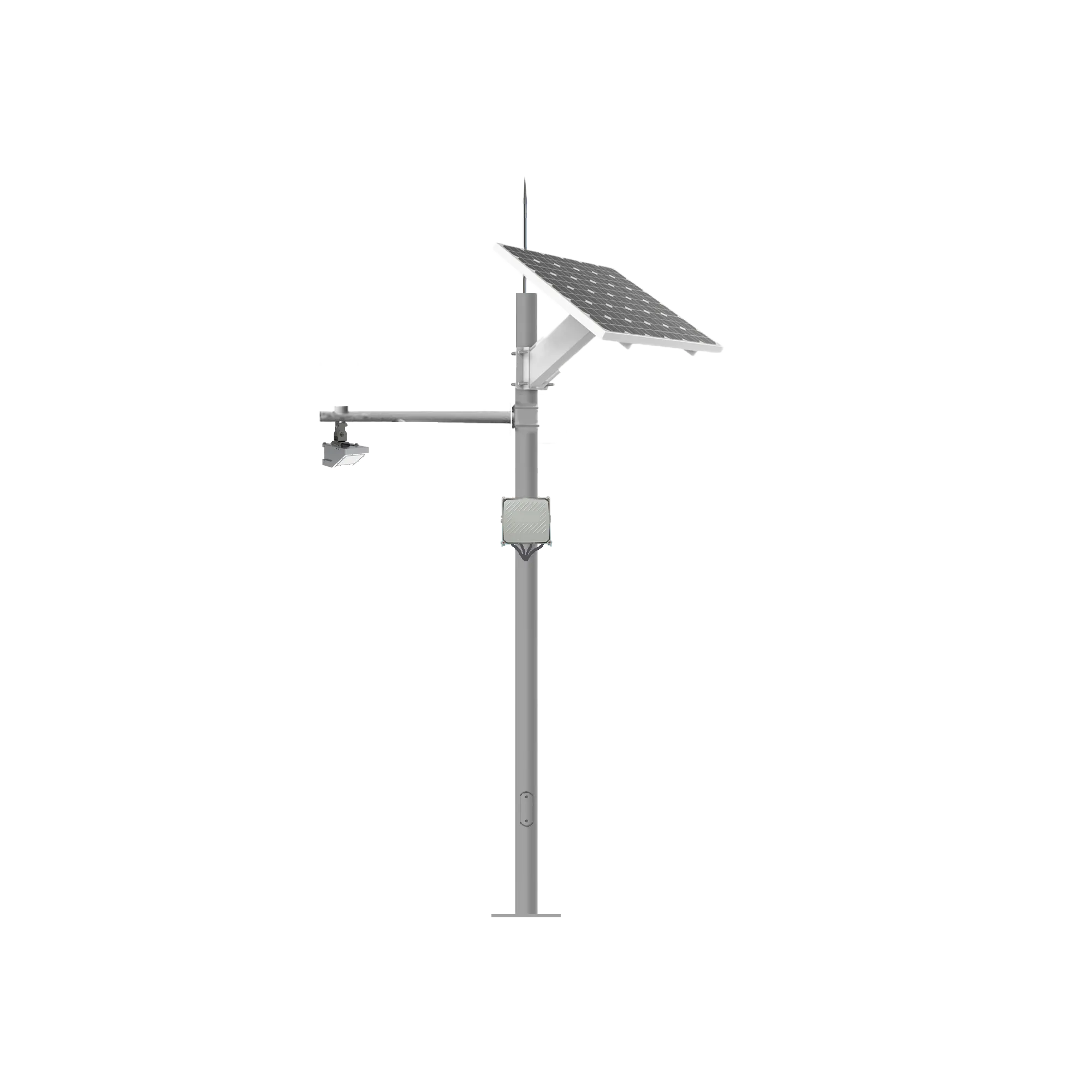1. Product Introduction
The Buoy Water Quality Analysis Station is an advanced smart water monitoring platform designed for real-time, multi-parameter water quality assessment in open water environments.
Built on a floating buoy structure, it integrates dissolved oxygen (DO), turbidity, ammonia nitrogen, and oxidation-reduction potential (ORP) sensors to provide comprehensive and continuous environmental data.
The complete system consists of:
• Buoy with anchoring mechanism – ensuring stable deployment even in fluctuating water levels.
• Integrated water quality analyzers – enabling simultaneous measurement of multiple parameters.
• Wireless transmission module – supporting long-distance data communication.
• Solar power supply unit – offering sustainable, off-grid power.
• Intelligent alarm and data management module – providing real-time anomaly alerts and data backup.
Unlike traditional cabled systems, this buoy-based design requires no fixed infrastructure. It can be rapidly deployed and relocated across lakes, reservoirs, rivers, or coastal monitoring areas—ideal for surface water monitoring, industrial wastewater discharge supervision, agricultural irrigation management, and environmental protection projects.
2. Functions
• Comprehensive water quality monitoring
The station supports real-time, online monitoring of multiple parameters—such as DO, turbidity, ammonia nitrogen, ORP, temperature, and conductivity. This enables precise tracking of water quality fluctuations in rivers, lakes, black-odorous water bodies, and urban drainage systems.
• Remote data transmission
Equipped with a 4G full-network communication module, the system achieves stable and high-speed wireless data transfer. Monitoring data are uploaded automatically to a remote management platform or cloud database for visualization and trend analysis.
• Remote configuration
Through an intuitive web interface or cloud platform, users can configure sampling intervals, data upload frequency, and alarm thresholds remotely. This ensures flexible monitoring strategies tailored to diverse environmental and climatic conditions.
• Adjustable data upload intervals
The data sampling frequency can be dynamically adjusted based on rainfall or hydrological events, accurately capturing the “rainfall–runoff–water quality” relationship and improving event-driven water quality response analysis.
• Data breakpoint resume
In case of network interruptions, all monitoring data are automatically cached locally. Once connectivity is restored, the system performs intelligent data retransmission, ensuring no data loss and maintaining full historical integrity.
• Power Supply System Monitoring
The system integrates an independent solar power supply with smart charge–discharge management. It continuously monitors input/output voltage, charging current, and battery health status, guaranteeing uninterrupted long-term operation in remote, off-grid environments.
3. Installation precautions
To ensure optimal performance and measurement reliability, follow these installation guidelines:
Pre-installation Inspection:Carefully inspect all buoy components, sensors, and cables before deployment. Verify that connectors and seals are intact to prevent leaks or sensor drift caused by mechanical damage during transport.
Site Selection:Choose a location downstream of discharge outlets with a minimum water depth of 700 mm, ensuring that sensors are fully submerged while avoiding contact with bottom sediments or floating debris.
Navigation Safety:Position the buoy away from main navigation routes and maintain an adequate distance from the shore to prevent interference from vessel movement or mooring activities.
Anchoring Method:Secure the buoy using anchor chains or weighted base structures. In flowing or windy conditions, reinforce with steel cables connected to the shore for stability and safety.
1. Real-time online monitoring of multiple water quality parameters;
2. Data storage and alarm functionalities;
3. Wireless data transmission capability;
4. Integrated floating buoy design;
5. Equipped with reagent-free sensors for high accuracy and stable operation.
